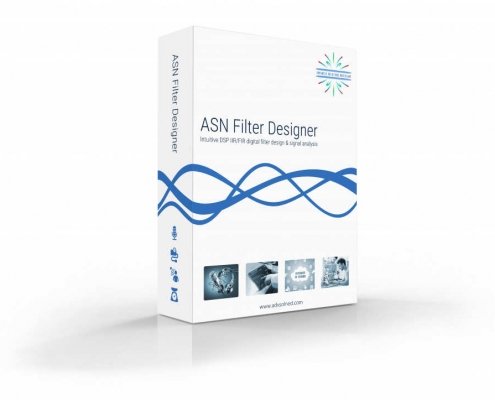For many, Covid-19 was an eye-opener for the importance of indoor air quality. Children spend a large portion of the day at school. American research shows, that children spend 1000 hours at school every year.It is therefore very important that students and teachers stay in a room with clean air. It is healthier and more pleasant. And poor air quality causes students to get worse grades. Why is good indoor air quality in schools and properly functioning HVAC so important? And how can sensors help monitor indoor air quality?
Lower grades, less fun
With stale air, students may find it hard to pay attention to the teacher. Or concentrate on tests or stay awake at all. Besides, poor indoor air quality may affect the ability to make decisions. So, without even realizing yourself, it can damage your productivity and your school results.
Research at K-12 education by Jacqueline M. Nowicki (U.S. Government Accountability Office, K-12 Education: School Districts Frequently Identified Multiple Building Systems Needing Updates or Replacement., Jacqueline M. Nowicki, June 4, 2020) shows that: “compelling evidence…of an association of increased student performance with increased ventilation rates,” yet “ventilation rates in classrooms often fall far short of the minimum ventilation rates specified in standards.” 41% of U.S. school districts need to update or replace their HVAC (heating, ventilation and air conditioning) systems in at least half of their schools. This means about 36,000 schools in the US.
In a survey of school buildings in the Netherlands, 7340 school buildings responded, but not always completely. Overall, 38% of the responding schools met the requested standards, that is 2789 schools. 807 schools (11%) indicated that they did not meet. The remaining schools could not (yet) say whether their building met the standards.
Further, a bad indoor air quality may lead to headaches and cause or worsen asthma and other respiratory illnesses. And, of course, it’s more pleasant to be in a classroom with clean air. Especially when you spend most of the day there.
How can you improve your indoor climate?
4 steps to improve Indoor Air Quality at schools
- Install and improve HVAC
- Filter and clean the air
- Measure indoor air quality with sensors
- Dashboard: monitor your indoor air quality
Install and improve HVAC
Due to poor ventilation, the ‘used’ air will not dilute enough with ‘new’, fresh air from outside. So, especially with many people in a closed room (like a class-room) and the ventilation is poor, the fresh air in this room gets more and more replaced by stale air. That’s why effective ventilation requires that it both brings fresh, oxygenated air from outdoors and removes stale indoor air.
How to adjust HVAC within schools:
- If you haven’t done already: install proper HVAC
- A California study shows that 85% of the classrooms did not provide adequate ventilation
- Purify the air in the building by extending the operating times of HVAC systems. Let the HVAC run before the first staff arrives and also after the last persons have gone home
- Increase the rate of air exchanges to provide fresh air through natural of mechanical ventilation
- Increase to 100% of fresh air intake or the maximum amount possible
Besides, regarding COVID-19, recent study (Centers for Disease Control and Prevention) shows that Covid-19 was 39% lower in schools by opening windows and doors, using fans, or those measurements in combination with air filtration methods.
Filter and Clean the Air
Air cleaners and HVAC filters filter pollutants or contaminants out of the air that passes thru them. They can help reduce airborne contaminants, including particles containing viruses. When ventilation with outdoor air is not possible or when outdoor air pollution is high, air purifiers (portable air cleaners) may be helpful without worsening comfort (temperature or humidity).
Sensors measure Indoor Air Quality
Children spend many hours indoors at school. Therefore, it is important to have a good indoor air quality. For the feeling of well-being for the children and teacher, but also for the children’s grades. You can measure the CO2 with a CO2 meter, or a sensor which combines the monitoring of CO2 with temperature, humidity and Volatile Organic Compounds, for instance ASN Airguard.
If you have installed HVAC, in some cases this doesn’t work properly. This may be caused by:
• Problems with installation of HVAC systems
• Incorrect HVAC systems purchased
• Incorrect controls and thermostats
• No follow-up testing after installation
• Poorly-maintained filters
Besides, when you’re busy, keeping an eye on the air quality may easily be ignored. Sensors warn you that the indoor quality has worsened. And they help you to maintain your indoor air quality such, that the risk of spreading the viruses is as least as possible. These warn you with a signal on the sensor and an alert on your app. So, you can take action, adjust your HVAC or just open a window.
Indoor air qualities sensors monitor your indoor climate. They monitor CO2, TOVC, humidity and temperature.
Dashboard: monitor your indoor air quality
Monitor the indoor air quality of your school with a dashboard. You can monitor humidity, temperature, TVOC and CO2 in real time. And it shows how the school performs over time: are there any locations where the indoor air quality easily drops to an unwanted level? So, you can find out the causes and improve air quality.
It is not only schools themselves that are increasingly recognizing the importance of a good indoor climate for students and teachers. But more and more governments (and parents) are also aware of the importance of air quality within schools. Through monitoring, schools can show authorities that they are meeting air quality standards. And also show parents that they provide a healthy and pleasant learning environment for their children.
Further, facility managers can use their reports by optimizing and save on energy costs by use of energy based on occupation levels and other factors.







